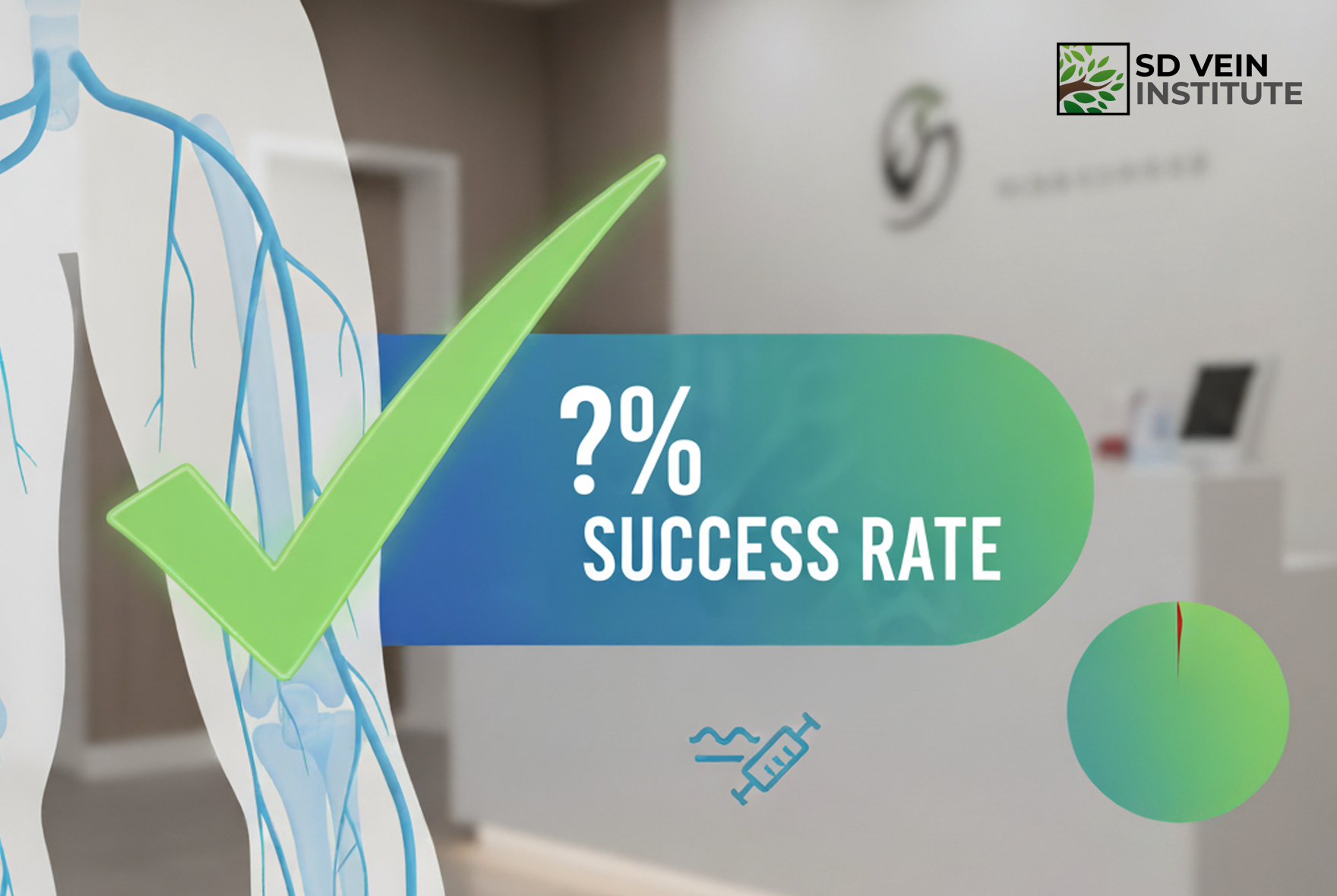What is the Success Rate of Vein Procedures?
TLDR
Vein procedures are generally successful with high patient satisfaction.
Success rates vary by procedure and patient condition.
Minimally invasive procedures offer effective results with minimal downtime.
Consult a vein specialist in San Diego for personalized advice.
Will I Need Anesthesia During Vein Treatment?
TLDR
Anesthesia use in vein treatments depends on the procedure type.
Commonly used anesthesia includes local anesthesia, tumescent anesthesia, and general anesthesia.
Different vein treatments, such as sclerotherapy or laser treatment, have varying anesthesia requirements.
Understanding the procedure and anesthesia helps reduce anxiety and set expectations.
Consult a healthcare provider to determine the most suitable anesthesia and treatment plan.
What’s the Difference Between Surgical and Non-Surgical Vein Treatments?
TLDR
Varicose veins and spider veins are common vein issues requiring treatment.
Surgical treatments include vein stripping and phlebectomy.
Non-surgical options include sclerotherapy, laser therapy, and radiofrequency ablation.
Each treatment varies in invasiveness, recovery time, and effectiveness.
Consult your healthcare provider to determine the most appropriate treatment.
Recent studies highlight advancements in non-surgical procedures.
Schedule a consultation with a vein specialist in San Diego for personalized advice.
How Many Visits Will I Need for Vein Treatment?
TLDR
Number of visits varies by treatment and individual needs.
Initial consultation assesses your condition.
Follow-up visits depend on treatment type: sclerotherapy, laser treatments, or surgery.
Lifestyle changes can reduce need for future visits.
Consult a vein specialist San Diego for personalized advice.
Is Vein Treatment Painful?
TLDR
Vein treatments, such as sclerotherapy and laser therapy, are generally minimally painful.
Local anesthesia is often used to manage discomfort during procedures.
Sclerotherapy is effective for spider veins and small varicose veins.
Consult your healthcare provider to determine the best treatment option for your condition.
Lifestyle changes can help prevent vein issues.
Seek medical advice if you experience vein-related symptoms.
What are the Treatment Options for Varicose Veins?
TLDR
Varicose veins are bulging veins, often in the legs, that can cause discomfort.
Treatment options include lifestyle changes, compression therapy, sclerotherapy, laser treatments, and surgery.
Pros and cons vary per treatment; consult a vein specialist.
Prevention includes regular exercise and avoiding prolonged standing.
Seek medical advice if you experience severe pain or swelling.
Recent studies show advancements in minimally invasive procedures.
Are Varicose Veins Dangerous, or Just a Cosmetic Issue?
TLDR
Varicose veins can be more than a cosmetic issue, potentially leading to complications.
Symptoms include aching, heaviness, and swelling.
Treatments range from lifestyle changes to medical procedures.
Consult a healthcare provider for personalized advice.
Prevention includes regular exercise and weight management.
Recent studies show advancements in less invasive treatments.
Can Men Get Varicose Veins, or Is It Just Women?
TLDR
Varicose veins are not exclusive to women; men can also develop them.
Risk factors include age, genetics, obesity, and prolonged standing or sitting.
Symptoms include swelling, pain, and visible veins.
Treatment options include lifestyle changes, compression therapy, sclerotherapy, and surgery.
Prevention includes exercise, weight management, and avoiding prolonged immobility.
Consult your healthcare provider for personalized advice.
Do Varicose Veins Always Get Worse Over Time?
TLDR
Varicose veins can worsen over time due to factors like age and genetics.
Symptoms include pain, swelling, and visible bulging veins.
Treatments such as sclerotherapy and laser therapy are effective.
Lifestyle changes can prevent worsening.
Consult a vein specialist for personalized advice.









